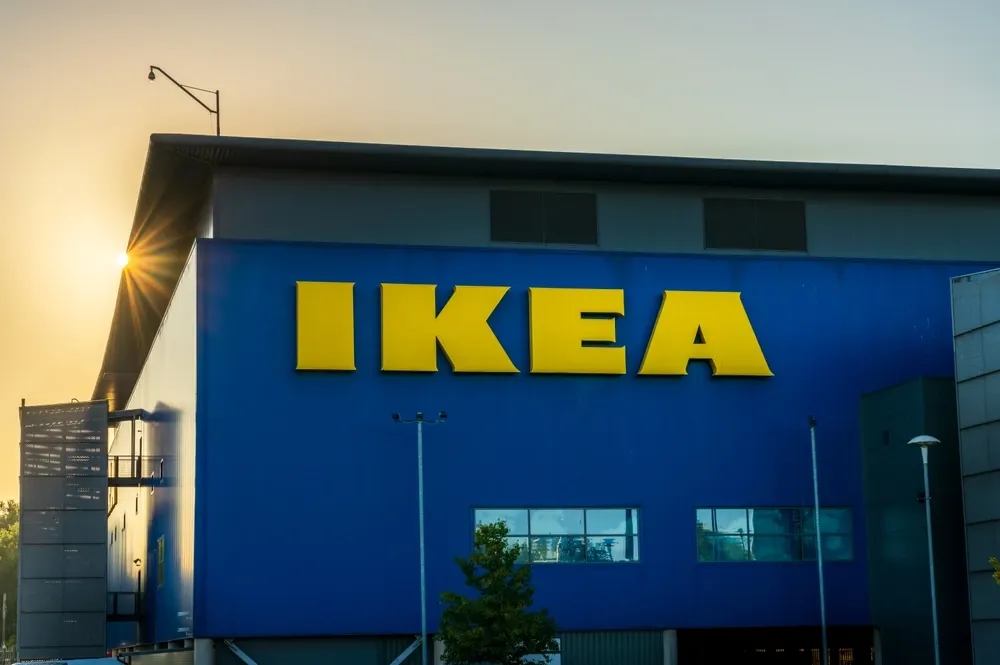Upstox Originals
The IKEA story: Has the Swedish furniture giant found its Indian home?

5 min read | Updated on May 16, 2025, 09:03 IST
SUMMARY
Navigating India's rapidly expanding yet fragmented furniture market, IKEA entered in 2018, adapting its global model with omnichannel strategies and localised products. Despite a slow initial growth and financial losses from store investments, the Swedish giant remains committed, eyeing the North Indian market with planned expansions in Gurgaon and Noida, betting on evolving urban preferences for modern, DIY-friendly home solutions.

IKEA’s India operations reported a modest 5% growth in revenue, reaching ₹1,852 crore in FY24. | Image: Shutterstock
India’s furniture market has evolved over the years, witnessing rapid growth, from a hefty $27 billion in 2024 towards a projected $40 billion by 2030. Rapid urbanisation, internet penetration, ease of online purchases and rising disposable incomes have all contributed to this growth. There is a mindset shift of Indians towards modern, functional and aesthetically appealing furniture that is minimalistic and convenient in urban living spaces.
However, the Indian furniture market is dominated by the unorganised sector, which captures 80% of all the sales. This prevalence creates obstacles to growth and competitiveness, including a lack of standardised practices, fluctuating prices, limited technological advancement, the absence of industry-wide regulations, and constrained export potential.
It was in this scenario that Ikea decided to make its India entry in the year 2018, opening its first store in Hyderabad. The internationally known Scandinavian furniture and home furnishings retailer is recognised for its flat-pack form of products, its Do-It-Yourself (DIY) culture and immersive store experience. The company has since expanded to include stores in Mumbai and Bengaluru, and also offers online shopping in multiple cities. But Ikea has been in India sourcing products for its international stores for 30 years now. Online deliveries started in 2019 in Mumbai, and since then, it has expanded to several other cities. Currently, IKEA delivers in only four states – Andhra Pradesh, Karnataka, Maharashtra and Telangana – where it also has an offline presence, with stores in Hyderabad, Bengaluru, Mumbai, and Navi Mumbai
IKEA’s footing in India
But despite its international appeal, interesting DIY model, and changing preferences of urban Indians, why hasn’t the furniture brand taken off in India? Here’s the full story.
IKEA’s India operations reported a modest 5% growth in revenue, reaching ₹1,852 crore in the financial year 2023-24. This was its slowest expansion since it opened its first store in the country. Its expenditure on large format stores in Hyderabad, Bengaluru and Mumbai and on distribution centres has led to losses amounting to ₹5,550 crore.
However, the brand seems to be ploughing on. It plans to open full-size stores in Gurugram and Noida over the next few years, while also setting up stores in smaller cities. It has set up a 1.8 lakh sq. ft customer distribution centre in Gurugram. Plans are afoot to launch in the biggest market of the country. North India is considered the largest home furnishings market, and it’s an opportunity the brand is banking on. In all this, IKEA has stayed true to its global approach while adapting to local needs.
Staying true to the global approach
Brand expert Dr Smitha Ranganathan states that Ikea’s expansion is a well-thought-out strategy, “While Indian brands like Pepperfry and Urban Ladder scaled rapidly through asset-light, digital-first models, IKEA stayed true to its global approach: building large-format stores, owning its supply chain, and delivering a consistent, immersive brand experience. That takes time in a complex, regulation-heavy market like India,” she says.
While the expansion has been slow, there are many things going for IKEA in India. It has adopted omnichannel retail, integrating physical stores with e-commerce. IKEA is not just known for its product range but also for its design, sustainability and affordability, as well as for the complete solutions it offers. “Cities like Bengaluru, Hyderabad, and Mumbai have responded well. These metros are home to digitally savvy, space-conscious consumers exposed to global aesthetics, making them fertile ground for IKEA’s model. Indian consumers today aren’t just buying furniture -they’re curating homes,” adds Ranganathan.
IKEA’s adaptability and the DIY culture
IKEA is also adept at adapting itself to the local markets. India is a diverse country, and every state has its unique preferences. It has locally adapted the range to some extent to suit unique Indian needs and created unique offerings, keeping in mind the cost-conscious Indian consumer. The DIY furniture concept is taking time to catch on in India, and IKEA has found ways around it. They have created a strong service offer for delivery and assembly services, having tied up with assembly partners like WIFY and Urban Company.
Experts believe that consumers are gradually opening up to the DIY concept. “India hasn’t traditionally been a do-it-yourself culture. Socioculturally, we have leaned toward a ‘do-it-for-me’ mindset, whether it’s assembling furniture or installing appliances. We have relied on the abundant availability of service providers. But that narrative is evolving, especially among younger urban consumers in metros where DIY is slowly gaining traction, driven by exposure to global trends, a desire for personalisation, and the flexibility of modular living,” says Dr Ranganathan.
The omnichannel approach is also paying off. Currently, 30% of IKEA’s sales in India come from online channels, with the remaining 70% from offline stores. It plans to introduce a store app to cater to different retail formats. The brand aims to provide a seamless customer experience across all channels.
IKEA’s next chapter
The upcoming chapter is crucial for Ikea. The next physical stores will come up in Gurgaon and Noida, two critical markets of North India with distinct identities and lifestyles. Homebuyers in Noida, typically upwardly mobile families, are increasingly drawn to international design concepts. Their focus is on practical modernity. Think flexible spaces, supportive office arrangements and ergonomic designs that mirror their growing desires and value-consciousness. Gurgaon, however, appeals to a more sophisticated and brand-attuned populace. Its globally experienced workers see their homes as extensions of themselves, seeking select, trendsetting and experience-rich settings that go beyond basic use. How IKEA manages this market might just be the game-changer.
By signing up you agree to Upstox’s Terms & Conditions
About The Author
Next Story
